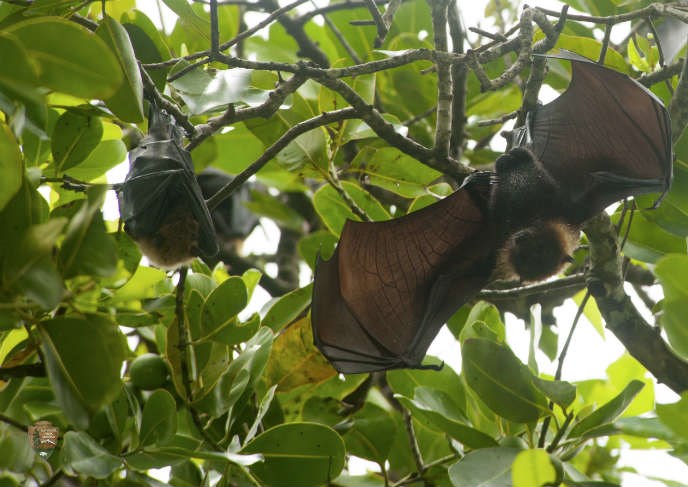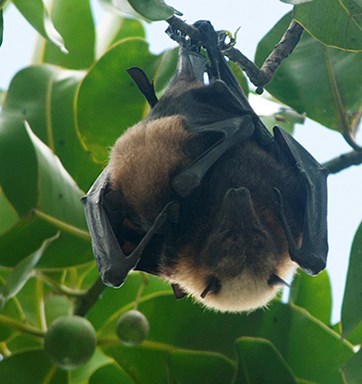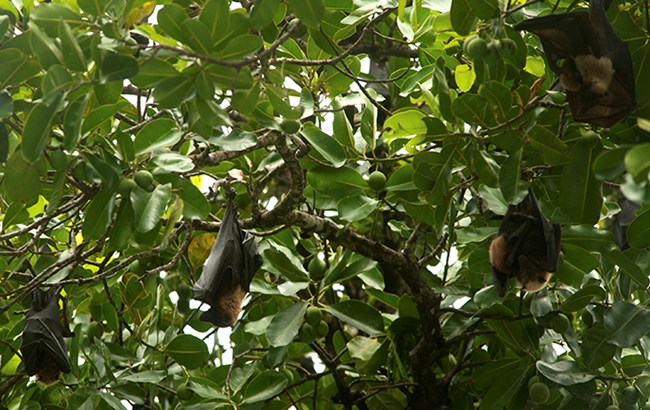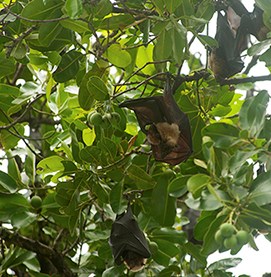
Fruit bats are one of the more unusual animals in American Samoa, especially for
visitors from areas where bats are small and rarely seen. Three species
inhabit our islands –two large fruit bats (Pteropus samoensis, P. tonganus) and a small insect-eating bat (Emballonura semicaudata).

NPS

NPS Despite these differences, it takes a keen eye to distinguish the two species from a distance. Close up, the pe'a vao may sport a white to yellowish triangular patch that starts from the forehead and extends to the back of its head, or it may simply exhibit a generally grayish head with or without flecks of white hair (much like a graying man). Its neck and shoulder areas are a beautiful russet brown, while the rest of the body has a dusty black appearance. The pe'a fanua, on the other hand, has a basically black head and body. These black areas serve to set off a distinctive band of creamy yellow on the back of the neck and which extends slightly below its shoulders as if in a cape. This explains why they are called white-naped fruit bats although the color is not really white. 
NPS But the pe'a vao does not do this. Instead, these bats usually roost singly on branches, or as pairs of males and females (suggesting a monogamous mating system), or as a female with its young. When roosting, pe'a vao males tend to hang from exposed or dead branches of trees on ridge tops while females roost in more covered positions on forest slopes. The care and energy that both bat species put into their young is remarkable. Pregnancy lasts approximately 5months in both species, and once the young are born, it takes at least another 3 months before they are weaned.Even after they are capable of flight, the young continue to receive parental care, perhaps until they reach adult size or become reproductively active themselves. We know this from observations of pairs of individuals seen to alight independently on the same tree and subsequently come together with one individual (presumably the juvenile) being wrapped up in the other's wings as they settle down to roost. Sightings of pregnant females and individuals carrying young in flight indicate that pe'a vao give birth mostly between April and June. Pe'a fanua births appear to occur year-round but are more common in January and June to August. |
Last updated: February 28, 2015
